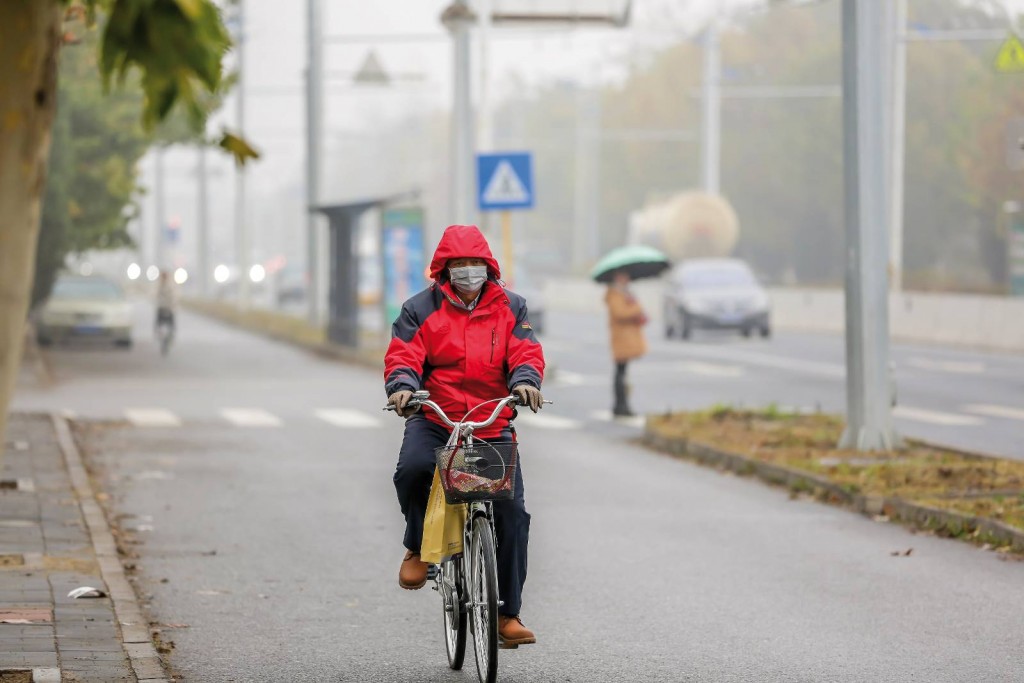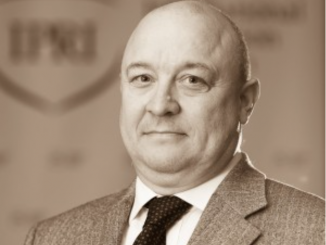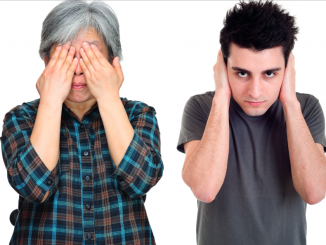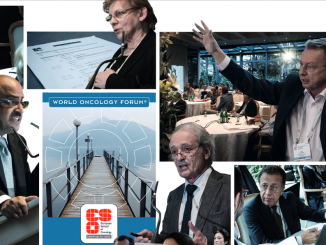
The revised European Cancer Code, launched last October, gives clear and concise information on what people can do to lower their own cancer risk. But until policy makers – and doctors – take prevention more seriously, millions of lives will continue to be lost unnecessarily.
Knowledge is power. And knowledge about what to do to lower the risk of developing cancer has the power to save lives. According to the International Agency for Research on Cancer, at least half of the world’s cancers are preventable on current knowledge alone. And IARC’s new European Code Against Cancer (published as a centre insert in this issue of Cancer World) takes the evidence about the exposures, agents and behaviours that definitely cause cancer and turns it into advice for the general public. It is a brief guide to what you can do to genuinely reduce your risk of getting cancer.
This 4th edition of the code, first published in 1987, was launched in October 2014 following two years of research analysis by scientists and cancer specialists with backing from the EU Health Programme. Its 12 points of simple advice focus on group 1 carcinogens – influences we know cause cancer – and those that people are most commonly exposed to. So smoking, diet, exercise, alcohol and exposure to sun feature most prominently, alongside advice on breastfeeding, vaccination and screening.
The highly publicised risk from processed meat is significantly not included: IARC has classed processed meat as a group 1 carcinogen, but the extent of its effect on mortality is still unclear.
“The Code is aimed at the ordinary European citizen wondering what they can do to reduce their cancer risk,” says Chris Wild, IARC’s Director. “People are faced with all sorts of information about cancer prevention on the internet and we hope the Code will stand out as an authoritative summary, with the science behind it.”
If people take the advice, the effect on cancer incidence could be spectacular. Research in 2011, conducted by Max Parkin from the Wolfson Institute of Preventive Medicine in London, found that tobacco, diet, alcohol and body weight together accounted for 34% of cancers in the UK in 2010; and that 45% of cancers in men and 40% of cancers in women could have been prevented if 14 known lifestyle and environmental risk factors had been acted on.
The potential impact of effective prevention strategies on the public purse as well as cancer mortality has also been well documented. In its 2014 report on the economics of cancer prevention and control, the Union for International Cancer Control (UICC) pointed out that implementing appropriate strategies for prevention and early detection and treatment could save between 2.4 and 3.7 million lives a year. Investing just $11.4 billion in core prevention strategies in low and middle income countries could save $100 billion in cancer treatment costs.
But despite regular calls from IARC for prevention to become a priority, it still fails to attract national funding or prominence. Detailed research into cancer research funding by Richard Sullivan from King’s Health Partners in London found that just 2–9% of public cancer budgets is spent on prevention in Europe, the USA and Canada. This compares with 25–45% on causes and mechanisms and 20–25% on treatment.
The only serious option
Sullivan has commented that prevention “remains the only serious option for managing the long-term socio-economic impact of cancer,” but it is threatened by lack of funding, lack of international co-operation and lack of understanding of human behaviour – the science of prevention.
“It’s clear there is an under-financing of research into prevention at the moment,” says Chris Wild. “That’s presenting us with a problem. We need an integrated approach to cancer control that balances the emphasis on the exciting new personalised treatments with efforts to prevent the disease in the first place – or detect it very early.”
“Costs are spiraling because the sophisticated treatments are increasingly expensive. If we can reduce the number of people developing cancer then the money available to treat those who do develop the disease should be greater – it’s a simple law really. If we can turn off the tap, or reduce the flow of new cases, that may help us in having sustainable cancer services in the next two or three decades.”
Last year a paper was published in the European Journal of Cancer which indicated how wasteful over-investing in new treatment modalities might be. Belgian epidemiologist Philippe Autier analysed different age cohorts in WHO mortality statistics to provide projections of the future incidence of cutaneous malignant melanoma. He demonstrated that – regardless of what happens in screening or treatment over the coming decades – death from skin cancer in light-skinned populations is likely to become an increasingly rare event. Melanoma, he suggests, will become limited to older age groups, and fade away after 2040.
The reason? In the 1970s, increasing knowledge about the carcinogenic effects of ultraviolet radiation caused parents to start protecting their children from the sun – reducing the likelihood of cancer in adulthood. The preventive effect starting from childhood had not previously been anticipated.
His analysis contrasts with other reports emphasising a current increase in melanoma incidence, which has fuelled the drive to develop new treatments. Immunotherapies such as ipilimumab and pembrolizumab, and BRAF inhibitors like vemurafenib and dabrafenib, have been hitting the headlines, and dominating conversations at cancer conferences for years. But their development has been enormously expensive, and cost–benefit analyses have raised questions about whether they give value for money: a course of ipilimumab costs $150,000, for a median progression-free survival of 2.9 months.
The Autier paper demonstrates the continuing narrative of how, if a longer view is taken, prevention brings dramatic effects.
This story was told most famously by epidemiologists Richard Doll and Richard Peto, who provided compelling evidence of falling mortality related to smoking cessation. In 2004 they showed how male smokers born between 1910 and 1930 lost on average 10 years of life, but stopping smoking at 40 bought them nine more years of life, and stopping smoking at 30 bought them nearly the full ten.
In practical terms, the health experience of Finland has vividly demonstrated the effectiveness of population-based prevention strategies. In the 1970s, the country led the world in heart disease rates, and the sparsely populated region of North Karelia became the testing ground for a massive raft of community-based interventions – blitzing the population with positive incentives to give up smoking, eat more healthily, become more active.
Competitions between communities to produce the most tobacco quitters or healthy eating outlets were complemented by changes to national legislation – banning cigarette advertising, providing incentives to farmers to produce fruit, vegetables and low-fat produce.
Between 1972 and 1997 the number of men under 65 from North Karelia dying from heart disease dropped by 73% and from lung cancer by around 70%.
So why aren’t such initiatives occurring on a wider scale? According to Chris Wild, the problem is partly that people’s personal experience of cancer means cure has an emotional pull that prevention doesn’t – and this carries through to charities, funding bodies and governments. However, no-one is suggesting that cure isn’t a priority too.
“Of course it’s important to treat patients,” says Finnish epidemiologist Pekka Puska, now the Director General of the National Institute for Health and Welfare in Finland, and the man who spearheaded the North Karelia project between 1972 and 1977. “But health service costs, overwhelmingly on clinical treatment, are becoming a very difficult issue even for rich country governments.
These expensive treatments deal with consequences and not cause. Based on what we already know, cancer is to a large extent preventable, and there’s no doubt that prevention is the most effective way to control the cancer epidemic.”

Investing in behaviour change
Puska, who was the WHO’s director of health promotion between 2001 and 2003, believes that action needs to be taken on two levels to make effective cancer prevention a reality. First, in the face of increasingly confusing media health messages, people need exposure to accessible and reliable information about what action they can take to prevent cancer. That is why he is behind the European Code – he was a member of the scientific committee that helped compile its evidence base.
The second level, he acknowledges, is more tricky: it revolves around converting knowledge about risk factors into behaviour change. “Information alone does not help,” he says. “Information initiatives are very important if they are linked to primary healthcare activities in the field, for example, measuring and advising people on their individual risk. This isn’t something for doctors alone, but other professions too.
“It’s also about making the healthy choice the easy one. That involves look-ing at social support. If everyone else smokes or serves certain food, that has a big impact, which is why the emphasis has to be on environmental changes, community changes, national policies on alcohol and tobacco and so on.”
What if international cancer funding priorities changed, and more money was diverted into prevention? Where would it be best spent? Undoubtedly, some should be spent on research, says Puska.
“There are certain cancers where we know too little about cause and further research is needed. We also need more research on the effectiveness of certain intervention methods. But when you examine complex prevention work like comprehensive health promotion activities or legislation, the fact is that you never get clean proof of effectiveness. The potential impact is great but the strength of evidence is always a bit shaky. So you need studies but you also need to learn simply by doing.”
There is already a sufficiently clear and strong evidence base to know what to do, according to Robert West, Professor of Health Psychology at University College London, and a leading researcher on smoking behaviours.
Research recently carried out by his department found that the public thinks that around 10–15% of the cancer spend should go on prevention. The actual UK figure is around 1–3%. West believes that if 10–15% was indeed spent on prevention, then cancer rates would go down at an unprecedented level.
“If I were to quantify that, I would say you would at least double the rate of decline,” he says. “When you consider that behaviour accounts for roughly 40% of cancer deaths, then you don’t have to make a huge amount of progress on the behavioural front to really eat into that. Obviously there are some quick wins, like smoking cessation and bowel cancer screening.”
He has a clear four-point plan for how the extra money could be used.
First, invest in prevention research: “an integrated programme of intervention and evaluation as a virtuous spiral”. Second, fund government action on price, availability and marketing of tobacco and other products linked with cancer.
“For example, some countries need funding to help them develop legislation around taxation, smoke-free policies and so on. Unfortunately, that does require resources because the countries don’t have the expertise to draft the legislation and they are fighting an industry that has unlimited amounts of money to try and prevent it happening.”
Third, fund mass marketing campaigns and advertising to promote healthy choices, smoking cessation services and screening. “It’s like Coca Cola or anything else: if you stop promoting it, people stop doing it.”
Finally, provide people with support once they’ve decided to stop smoking or other unhealthy lifestyles: “This might be digital, or using Skype, or a whole range of new technologies, medications and support services. There’s plenty of evidence that it works.”
IARC too is clear that its European Code Against Cancer is only part of a complex picture. “It needs to go together with the right legislation on exposures such as air pollution which the individual has no control over,” says Chris Wild. “Taxation on cigarettes and the legislation around tobacco have illustrated just how important policy is to reducing exposure.”
But if the war against cancer is to move into fruitful fields of prevention, it’s going to take more than lobbying politicians and funders to achieve. Cancer clinicians too have an important role – a role they may currently be overlooking as they focus on the here and now of saving lives.
The clinical community can help
“The clinical cancer community could do more to put across the synergies between these areas of prevention and treatment – translating basic science about, say, a mutation, into both targeted treatment and understanding of causes to benefit populations,” says Chris Wild.
Large comprehensive cancer centres, which have prevention within their remits, are particularly well positioned to promote an integrated approach, he adds.
“They have a big responsibility to show leadership and influence at policy level,. The leaders of those centres are rightly well respected, and I would ask them to use their platform to promote prevention as part of an integrated approach to cancer control.”






